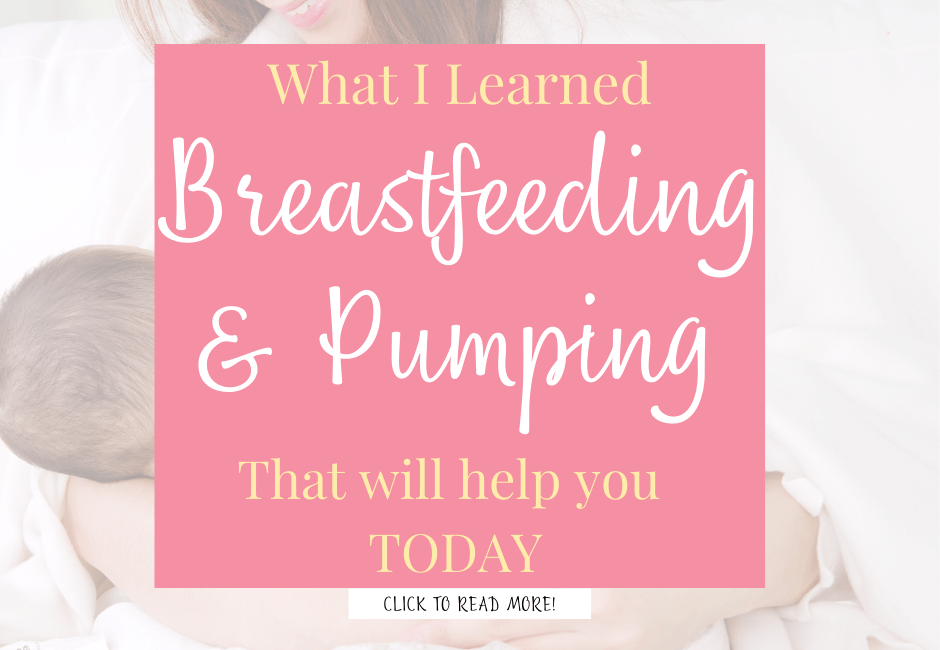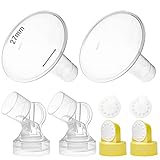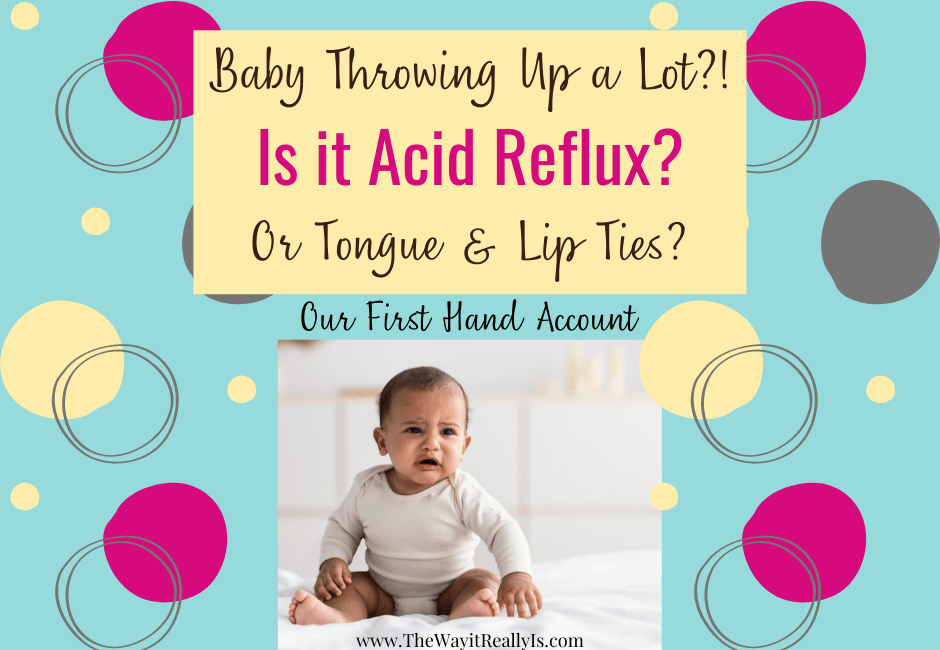Are you looking for breastfeeding tips and pumping tips? From breastfeeding my first child to exclusively pumping for my twins, I have a lot of breastfeeding tips and exclusively pumping tips to share.
I’ll break it all down in easy to understand and very candid explanations of what worked and what didn’t.
Note: As an Amazon Affiliate I earn from qualifying purchases made through affiliate links, at no extra cost to you. Read my full disclosure for more information.
Table of Contents
My First Child
When my first child was born in 2016 I had planned on exclusively breastfeeding him, directly from me. My husband and I even went to a class about it. However, once he came into this world a week overdue after 27 hours of being induced which ultimately ended in a c-section, breastfeeding was not as easy as it had seemed.
How do these boobs work?
I remember after being up for so long and while recovering from the labor and c-section I couldn’t get my boobs to produce the colostrum at the level that I wanted them to.
I mean it was just supposed to magically happen, right?!
I remember the nurse vaguely telling me to use hand expression to express the colostrum and then walking out of the room. Now, I’m no prude but I looked at my husband and said something to the effect of, “so…like I’m supposed to touch my boobs and somehow make milk come out? What?”
I did try a little bit but felt quite awkward about it.
It was a Saturday and the hospital I delivered at didn’t have a board-certified lactation consultant on staff on the weekend so I was on my own to figure out how to express breast milk. Obviously, my nurse wasn’t going to be of any assistance as she figured because I owned a pair of breasts I must know how to milk myself.
Long story short, I didn’t make enough milk soon enough so my overdue baby ended up in the Neonatal Intensive Care Unit (NICU) for hypoglycemia (low blood sugar) due to not getting enough milk.
I felt like a failure.
They had to give him formula to ensure he was getting the nutrition he needed until I was able to express breast milk in the capacity he needed. This didn’t happen until I started pumping with a hospital-grade pump that I had to share with another new mom, which was less than ideal since it wasn’t always available when I needed it and since he was in the NICU we were on a tight schedule.
Finally able to nurse
Eventually, my breast milk supply increased with the routine of being wheeled to the NICU every 2 hours to attempt to nurse my son, then come back to the room to pump for 20 minutes or so and then try to find a minute or two to rest and recover from the labor and c-section, get checked out by a nurse to see if I’m healing alright and for pain meds, eat something, and then go back and do it all again.
It was exhausting.
We got into our routine once we all got to go home together 4 days after my first child was born. I was still recovering from labor and a c-section so the Boppy pillow we had wasn’t working so great as it was laying right on my incision. We ended up purchasing a My Brest Friend nursing pillow, like the one I had used at the hospital. It was perfect and I highly recommend it, whether or not you had a c-section. It’s much more supportive than the traditional Boppy pillow.
Mastitis
Three weeks after my son was born I ended up with mastitis. It. Was. Horrible. I wanted to quit. I remember texting my cousin who has three sons and is a nurse, telling her I just wanted to quit. She helped me find the courage within myself to push through and I’m forever grateful that I did. I ended up nursing my son for 21 months until I was two months pregnant with twins and was worried about nursing and the high-risk pregnancy at the same time.
I learned from my chiropractor to take Sunflower Lecithin daily to keep my milk ducts slippery to prevent clogs. This helped immensely. I continued to take Sunflower Lecithin while exclusively pumping for my twins, doubling the dose since I had double the milk output. Not sure if that was needed but it worked! I highly, highly suggest sunflower lecithin daily while breastfeeding or pumping AND while weaning once you get to that point.
Pumping at work
When I had my first child, I went back to work 2-1/2 months after he was born. The school year was starting and I felt that if I didn’t go back then that I’d miss out on crucial details for the school year. Since my husband and I were both working full time, our son was in daycare.
Daycare required 5 x 4oz bottles of breastmilk a day for him to drink. I didn’t make that much milk on a daily basis so I typically had to thaw a bag from my frozen breastmilk stash. He also generally didn’t drink that much milk and I’d end up pouring some hard earned breastmilk down the drain which killed me every time.
Pumping Session Logistics
Ensure that when you are going to pump at work that if you have an electric breast pump that you have access to an electrical outlet. If you have a manual pump, this is something you won’t need to worry about, however, then you’d have to pump one breast at a time which isn’t as efficient as a double-electric pump.
You’ll also want a space where you can be alone without the chance of anyone walking in, in part, because if you’re anxious that someone will walk in then you will have a harder time relaxing which is needed to produce enough milk.
I ended up needing to pump 5x a day at work for 10 minutes each time which took about 15 minutes each time total due to clean up, etc. Each session produced close to 4oz total. During this time I’d have my office door closed, shades drawn, but I’d still be working on writing reports for work because I had a hands-free pumping bra.
After some trial and error, I figured out a pattern that worked well. I’d wear a normal nursing bra to work because I still nursed my son when I got home and before work. When I was ready to pump, I’d unhook my bra and pull it and my shirt up and then zip on the pumping bra and attach the pump. This seemed to work the best for me. I’d always have a towel on my lap just in case some breastmilk dripped when I disconnected from the pump.
I found great success with the Medela Pump In Style Advanced.
Another tip is to have a photo of your baby to look at while you’re pumping. This will help with breast milk production and the let-down reflex.
Storing Pump Parts & Storing Milk at Work
At work, I didn’t have easy access to a sink or fridge. I had a large purse looking cooler that I’d keep just my pump parts and bottles in. I had a second cooler for my lunch. I was able to put the pump alone into my backpack I carried with me from school to school, at that time I was a school psychologist.
Within the large cooler for the pump parts and milk, I started the day out with 5 empty Philips Avent Naturals bottles with sealing discs.
I also had adapters that made it so I could pump directly from my Medela pump into my Avent bottles but pumping into the Medela bottles is fine too if desired.
The actual pump parts were kept in a gallon-sized ziplock bag that stayed in the cooler as well. I put them back into the ziplock bag after each pumping session. Since they stayed cold they didn’t need to be washed or wiped down until I got home from work and then would wash them all in hot soapy water so they’d be ready for the next day.
Of course, I also had ice packs to keep everything cool all day.
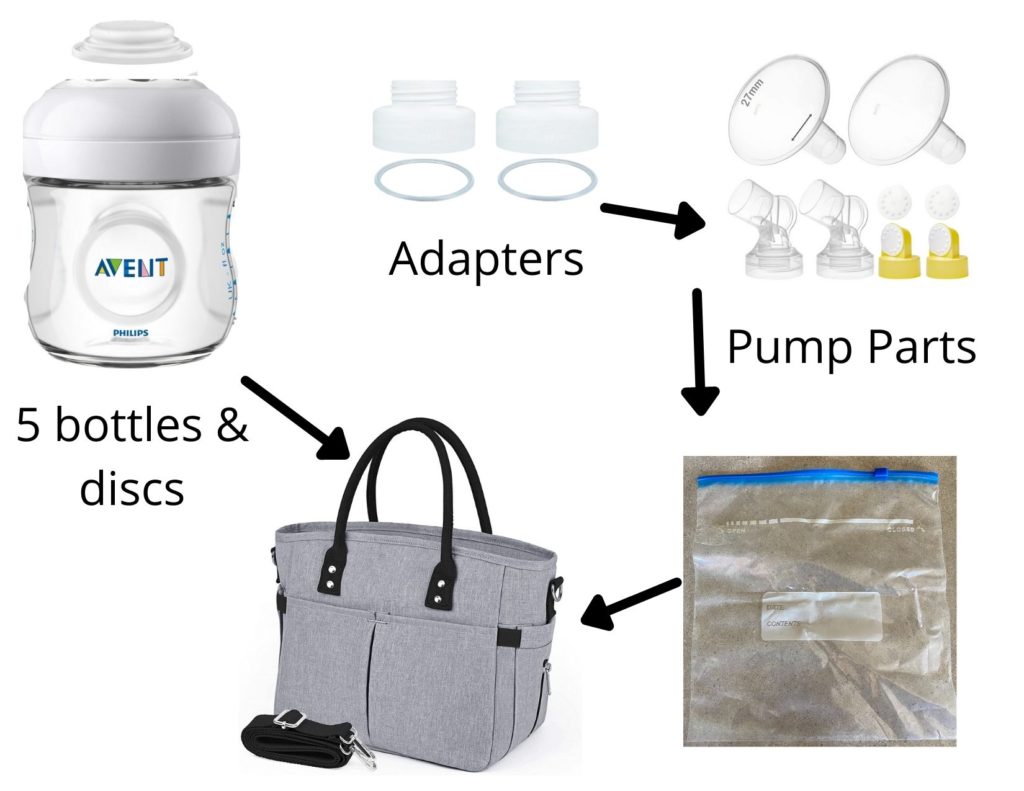
Breastfeeding and Pumping for Twins
My twins were born at 36 weeks and 1 day, so they were preemies and had difficulty with a few things in the beginning, including latching to effectively nurse. My twin who was in the NICU for 6 days was better at latching and nursing than his twin brother, but still, neither were getting enough from nursing alone. I had really hoped to be one of those rockstar moms who could tandem breastfeed her twins, but sadly I think I was only able to do that once. I had even purchased the Twin Brest Friend nursing pillow so I could fit both babies at once.
Attempting Nursing x 2 + Pumping + Bottle Feeding= Time Consuming
Much like with my first child, I started pumping right away with a hospital-grade pump, especially because I couldn’t get down to the NICU every couple of hours to feed the NICU baby so we needed to bring him what I pumped. It was suggested that I keep trying to get the twins to latch before each time I pump and hopefully at some point they’d catch on.
I did this for the first couple of weeks, maybe even the first month, but it was so time-consuming.
Here was the schedule: try to nurse baby A for 10 mins + try to nurse baby B for 10 mins + double pump with an electric breast pump for 40 mins while babies cry for milk + feed babies pumped milk for about 15 mins…all of which generally ended in one or both spitting up or projectile vomiting it all out and needing to clean all of that up.
In all, it was about an hour and a half at the least to 2 hours or so each time. I had to do this routine every 3 hours from when I started, meaning I had maybe an hour or so to get anything done between feedings, such as caring for my 2-year-old son, caring for myself, getting us all food, getting diapers changed, and getting the twins down for a nap.
It was not sustainable.
I think it was when they were a month old since they were preemies that’d be their due date, I only did the trying to nurse them first routine once a day as I just couldn’t keep up with it all anymore. Pumping was difficult enough but at least it produced results (milk).
Below is a picture of our setup for those first few weeks when I was attempting to nurse and then pumping. We’re on our bed and I had just tried to nurse both, and now was pumping. You can see my hospital-grade pump and hand sanitizer in the photo as well as my still huge and stretchmark-laden belly as I was just a week postpartum. One twin was sleeping in front of me, likely after being fed a bottle, and the other was being fed by bottle by my husband. As you can imagine, this was a bit hectic and hard to get up from this position safely! We didn’t let the baby sleep there once I was done pumping, we moved him to his bassinet, and his brother into his bassinet as it was time for a nap.
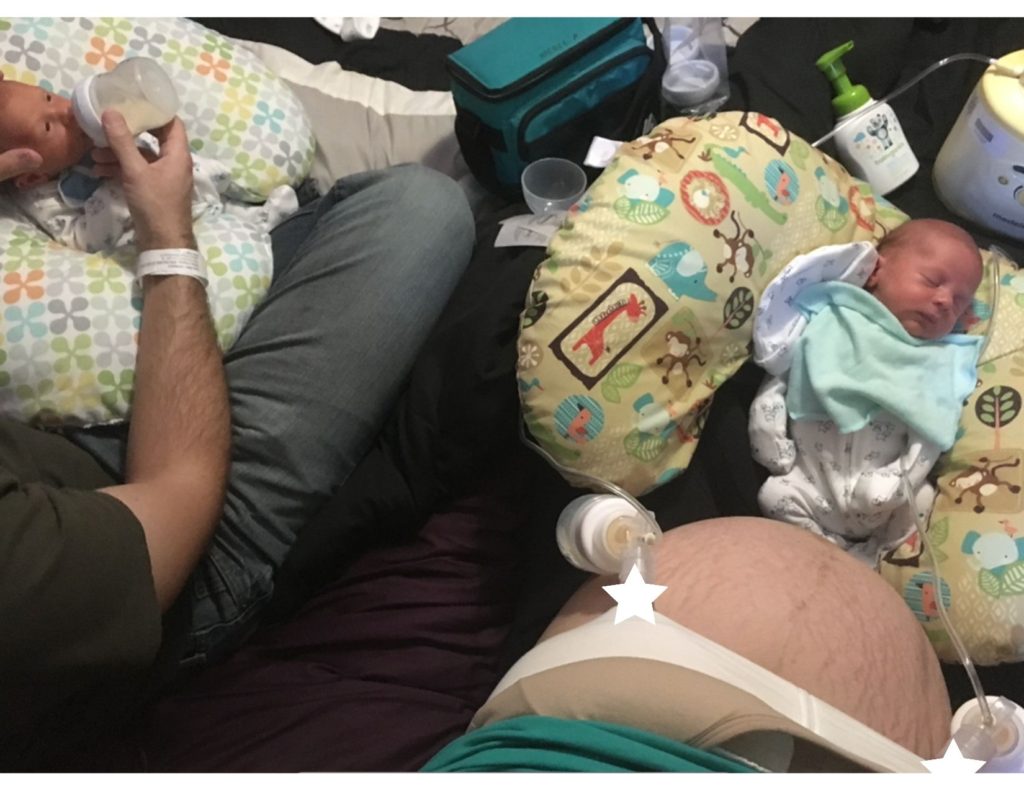
Tongue & Lip Ties
During the first two months of their lives, we went to board-certified lactation consultant after consultant, pediatricians, and chiropractors to see if we could figure out why they couldn’t latch and why they kept throwing up all of my hard-earned milk! I had tried a breast shield to get them to latch better, tried to have them sit up after eating, and all the other things that had been suggested to me.
Finally, at 2 months old they were diagnosed with tongue and lip ties and had them revised with a laser.
Once that happened they would have been able to latch more easily and we tried for a day but I realized it was easier and more predictable for all of us if I just continued to exclusively pump.
Plus, by then they weren’t really sure what my boob was supposed to do since I hadn’t been trying to breastfeed them before pumping anymore so they were getting this thing shoved in their mouths that were hurting from the laser procedure and they were hungry. Not an ideal mix.
Click the graphic below to read more of our tongue and lip tie journey.
Exclusively Pumping
Once I got used to the fact that I was going to exclusively pump, I worked on setting things up mentally to prep me for this huge change in what I thought would happen, and physically.
My Experience with Spectra vs Medela
Of course, soon after making this decision, my pump died. Completely died. I had gotten a Spectra S1 through insurance when the twins were born as the lactation consultants in the hospital told me that it was as close to a hospital-grade pump as I could get and that it was better than the Medela Pump in Style that I had used with my first child. In my mind, it wasn’t better. Sure, it was nice that it was battery operated and rechargeable but it took me twice as long to pump enough milk as it did with a Medela. This was not ideal but I kept trying to make adjustments to it to make it work for me.
Then it just up and died one day. Of course, their only customer service was through Facebook Messenger and no one got back to me for a couple of days and then they shipped out a new one which took a few more days.
However, the day that the pump died, I headed out to Target to buy a Medela Pump in Style Advanced so my boobs wouldn’t A. Explode or B. so I wouldn’t get mastitis from the backed-up milk. Plus…I needed to feed my babies. The Medela Pump in Style Advanced worked SOOOOO much better than the Spectra. Maybe that’s because it was a flawed unit from the start, seeing as it died after a month of use (I had used the hospital-grade Medela pump through insurance for the first month since I had a baby in the NICU).
I never went back to the Spectra though, not even once they sent me a new one. I could now pump in just 20-25 minutes which was a game-changer. I spent $200 out of pocket on the Medela but it was worth it. I only wish I would have gone with my gut and picked that one from the start. A quick aside, I had tried to use my old Medela pump that I used with my first child but after so much use and a couple of years, it just didn’t work as well. The new Medela was amazing though.
Through all of this, I had made a post on Facebook about my pump dying and soon a friend had told me they had a hospital-grade Medela I could use. Wow!!! She graciously dropped it off and I used that for a while until and then switched back to the new Medela Pump in Style I had gotten at Target…never back to the Spectra.
To learn more about the best breast pump for twins, check out my blog post below.
Breast Pumping on the Go
My twins had a lot of medical appointments after they were born. Baby B (who became Baby A at birth but will always be Baby B to me as he was in my tummy) had a flat head and torticollis which we first tried to remedy using chiropractic care and craniosacral therapy, one appointment for each, each week so twice out of the house with my little crew.
After months of this routine, in the snowy MN winter, we decided to make an appointment regarding a helmet and physical therapy to correct both problems. This meant back-to-back appointments every two weeks about 30 minutes away which meant we were away from home for 2-1/2 hours at least, each time. I had no choice but to pump on the go. I was able to do so using my trusty pumping bra from my first child and either the battery pack on the Medela or by plugging it into the outlet in the van. Yes, my van has a legit outlet and it’s amazing.
I used the same tactics for pumping on the go as I had when I was pumping for my first child and working. I had my cooler bag with my pump parts, empty bottles, and ice packs. Only this time, I had the bottles outfitted with nipples and covers so I could feed the babies right away instead of storing them for later. Generally, I’d pump while driving which I had heard a lot of other moms, especially twin moms, would do. I used my pumping bra which I got all situated before I left the garage in the van and since it was winter I had a jacket on which would at least mainly block anyone’s view of what I was doing. I always waited until I was in the parking lot before I unhooked myself from the pump or anything like that, no matter when the milk flow had stopped. It was much too dangerous to do that while driving!
Storing Pump Parts at Home
When I was able to pump at home, which was most of the time, I would store pump parts in a 7-cup Pyrex bowl without a lid in the fridge. This way I didn’t have to waste plastic bags and I also didn’t need to clean my pump parts constantly after each pump session. This was really nice to be able to do.
Note: if you use this method, be sure to let the pump parts sit out for a couple of minutes before pumping or you’ll freeze your boobs!
Exclusively Pumping for Twins Schedule
Even four years later I can still remember my schedule for exclusively pumping for my twins.
I pumped 7 times a day for 15-20 minutes each time, once I was using the Medela.
My schedule was: 1 a.m., 5 a.m., 8 a.m., 11 a.m., 2 p.m., 5 p.m., 9 p.m.
Though we both were up overnight with our first child whenever I needed to nurse him, with the twins, my husband was sweet enough to let me sleep and he woke with the twins. That way I was able to get a few hours of sleep generally from 10 p.m., after pumping, to 1 a.m. and then from 2-5 a.m.
I really needed that sleep to be able to parent 3 boys under 3 all day and make enough milk for the twins.
Trouble Making Enough for Two?!
At first, I wasn’t making enough milk for both of my babies, which is a common issue. Though my body knew it made two babies from one egg and one sperm, it needed to work a bit before it amped up the milk production to be able to create 8oz of milk every 3 hours! I don’t blame it, I mean that’s a lot.
I drank at least 64oz of water a day. Probably more. I was constantly drinking water and constantly peeing, much like when I was pregnant with the twins. I also was constantly eating to ingest enough calories, often I’d be eating a Larabar anywhere I went, and sometimes even while pumping, as I needed to get those calories in.
At one point, I was making too much milk. I actually ended up donating over 600oz to several different babies. I donated some to triplets, and the majority of it to a baby near where my in-laws live, and some to another baby who was in need. It was so great to be able to donate milk to all of them.
I kind of had specialty milk since I’m gluten, dairy, and soy-free, which often moms are looking for dairy and soy-free when their babies are having tummy issues. Even when the mom stops eating dairy and/or soy, it takes at least a couple of weeks until her milk is free of those foods, that’s where my milk really came in handy.
Preventing & Clearing Clogs
Though I took 6 capsules of Sunflower Lecithin, as mentioned previously, while nursing the twins, I still had clogs sometimes. I was petrified of getting mastitis again as I did with my first because it hurt SO much. I would a warm compress prior to pumping when I felt a clog to help loosen everything up. I also would massage as needed to help the clogs dislodge. There were a couple of instances where despite my best efforts, clogs grew and were near the mastitis stage.
There were two times that I had to get on all fours and ‘dangle feed’ while my husband tried to suck the clog out. It was weird. It was awkward, but it had to be done. It was my last-ditch effort before the horrible clog would turn into mastitis. Both times this hurt like heck but ended up helping the clog dislodge and things were soon back to normal. So if your partner is willing, this is something to try if you have a bad clog.
Freezing Milk
Below is how I froze my milk when I had excess. I’d put it in a breastmilk storage bag, lay it flat in the freezer until it froze, and then place it on it’s side in a shoebox-sized plastic bin. I always wrote the date and amount on the bag before I froze it and also labeled the bins in the freezer. This is just one of the bins full of frozen milk. I think we had up to 6 at one point. They took up most of the chest freezer!
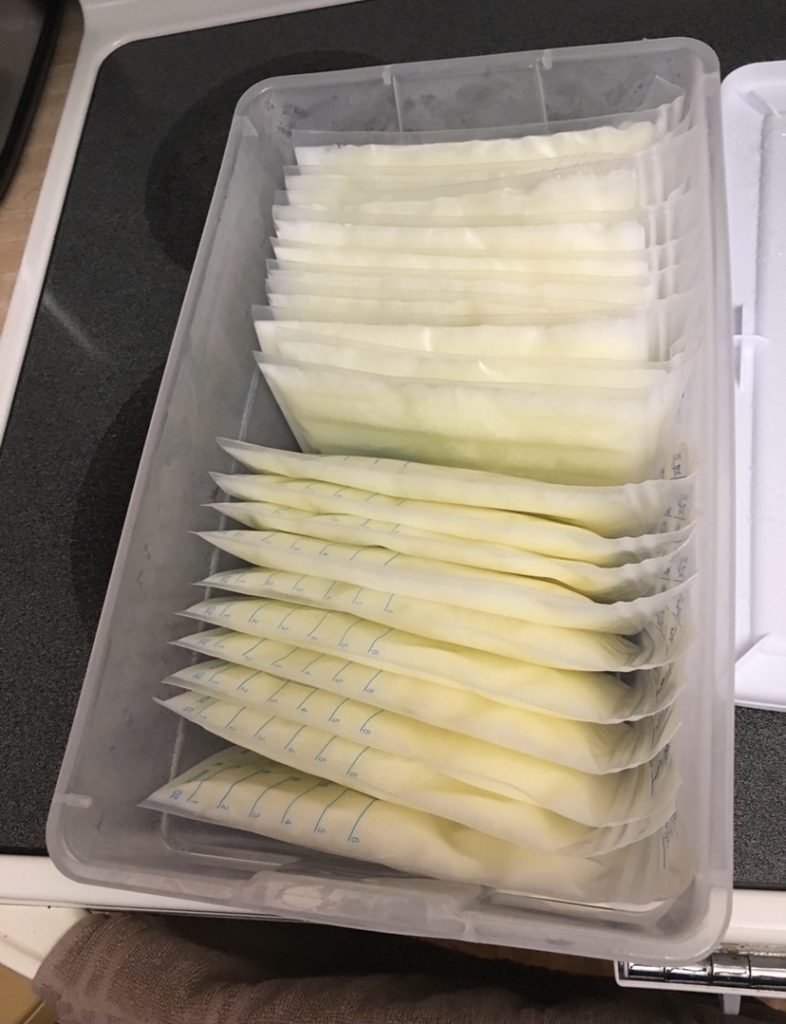
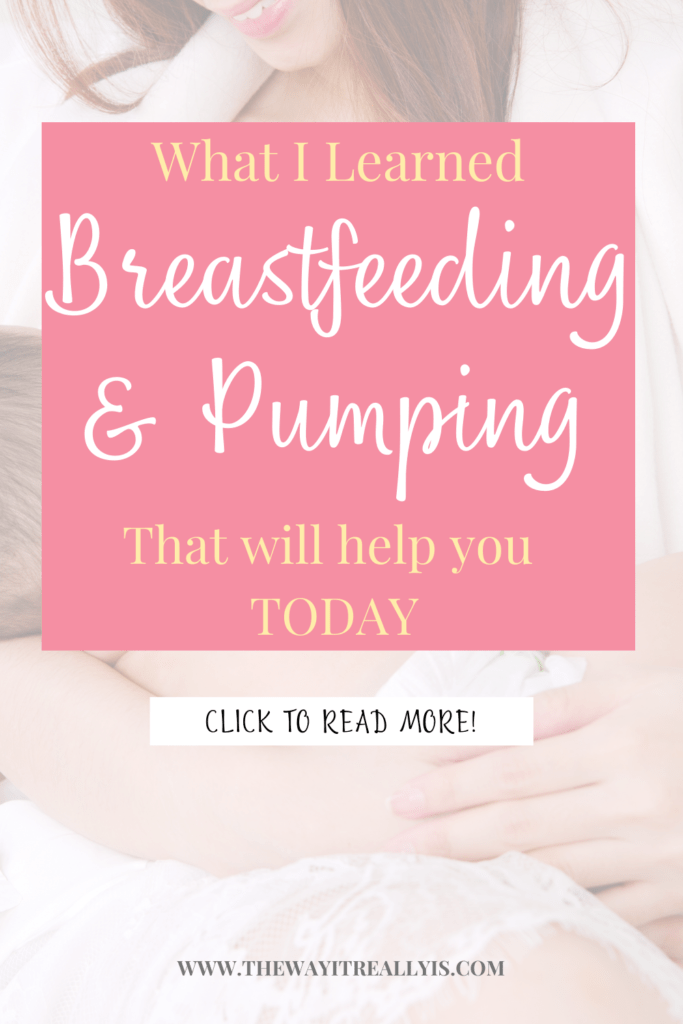
As a mom of identical twins and a son two years older, I have gained invaluable experience in the realm, and chaos, of parenting. With a Master's Degree and Education Specialist Degree in School Psychology, I spent years as a school psychologist, helping children navigate through their educational and emotional challenges. Now as a stay at home mom and professional blogger, I combine my areas of expertise to help you in your parenting journey.

